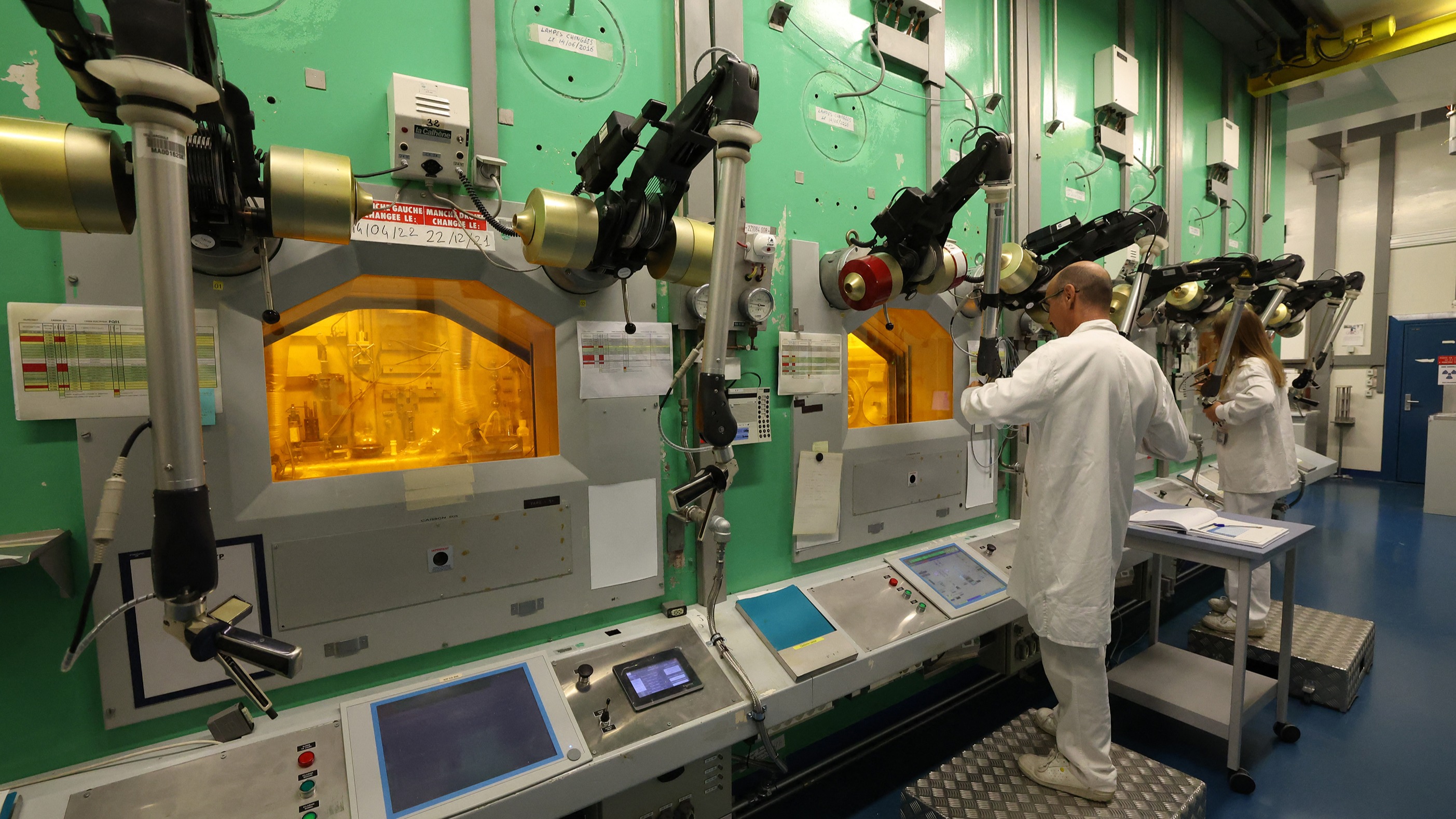Report on Rhode Island’s 2024 Tourism Sector Performance and Alignment with Sustainable Development Goals
Executive Summary
In 2024, Rhode Island’s tourism sector demonstrated significant growth, achieving record-breaking visitor numbers and economic contributions. This report analyzes these achievements through the lens of the United Nations Sustainable Development Goals (SDGs), highlighting the sector’s impact on economic growth, employment, and community development. The data indicates a strong alignment with SDG 8 (Decent Work and Economic Growth), SDG 11 (Sustainable Cities and Communities), and SDG 17 (Partnerships for the Goals), presenting a framework for future sustainable development.
Economic Growth and Decent Work (SDG 8)
The tourism sector’s performance in 2024 was a primary driver of economic prosperity and job creation in Rhode Island, directly contributing to the objectives of SDG 8, which promotes sustained, inclusive, and sustainable economic growth and decent work for all.
Key Performance Indicators
- Visitor Volume: A record 29.4 million visitors, representing a 3.5% increase from 2023.
- Visitor Expenditure: A total of $6 billion, marking a 7% increase from the previous year.
- Total Economic Impact: The sector generated $8.8 billion in total economic activity for the state.
Employment and Livelihoods
The growth in tourism has been instrumental in creating and sustaining employment opportunities across the state.
- Total Jobs Supported: The industry supported 88,509 jobs, a 2.1% year-over-year increase.
- Share of State Employment: Tourism-related jobs now constitute 13% of all employment in Rhode Island.
- Key Employment Sector: The food and beverage sector is a significant contributor, providing 31,089 positions.
Supporting Sustainable Communities and Local Economies (SDG 11)
Tourism revenue directly supports local enterprises and community infrastructure, aligning with SDG 11’s goal of making cities and human settlements inclusive, safe, resilient, and sustainable.
Analysis of Visitor Spending
- Food and Beverage: This sector received the largest share of visitor spending, with $1.5 billion (26% of total), directly benefiting local restaurants and suppliers.
- Lodging: Accommodation services accounted for $1.3 billion (22% of total), supporting local hotels and small businesses.
- Transportation: Air transportation spending saw a notable 11.1% increase, indicating enhanced connectivity and investment in transport infrastructure.
Strengthening Local Enterprise
The influx of visitors and their spending stimulates local economies by supporting small businesses, encouraging investment, and fostering community resilience. The sustained demand for both day trips and overnight stays ensures a consistent revenue stream for communities across the state.
Governance and Partnerships for the Goals (SDG 17)
The state’s successful tourism strategy is underpinned by strong governance and collaborative efforts, reflecting the principles of SDG 17, which emphasizes partnerships to achieve sustainable development.
Government Commitment
Governor Dan McKee attributed the record-breaking figures to strategic investments in destination marketing, emphasizing the goal of creating a sustainable tourism economy that benefits all residents and businesses. Secretary of Commerce Stefan Pryor reiterated that tourism is crucial for job creation, economic stimulus, and attracting investment into Rhode Island’s communities.
Collaborative Framework
Rhode Island Commerce’s future strategy involves continued partnerships with local entities, including:
- Convention bureaus
- Chambers of commerce
- Travel-related organizations
This multi-stakeholder approach is essential for building on current success and ensuring the long-term sustainable management of the state’s tourism assets.
Future Outlook: Integrating Sustainability
As Rhode Island’s tourism sector continues to flourish, a forward-looking strategy must integrate broader sustainability principles to protect the natural and cultural assets that attract visitors. This includes addressing SDG 14 (Life Below Water) and SDG 15 (Life on Land) by ensuring that tourism growth does not negatively impact the state’s vital coastal and terrestrial ecosystems. Continued success will depend on balancing economic objectives with environmental stewardship and social equity to ensure the long-term viability of the tourism industry as a key driver for Rhode Island’s sustainable development.
1. Which SDGs are addressed or connected to the issues highlighted in the article?
-
SDG 8: Decent Work and Economic Growth
This is the most prominent SDG in the article. The text focuses heavily on the economic prosperity driven by the tourism sector in Rhode Island, including record visitor spending, total economic impact, and significant job creation. The entire article is a testament to how a specific industry—tourism—is contributing to the state’s economic growth and providing employment opportunities.
-
SDG 11: Sustainable Cities and Communities
The article connects to this goal by highlighting how the growth in tourism positively impacts local communities. It mentions that tourism “supports local businesses, small enterprises, and communities across Rhode Island.” Furthermore, it notes that the state’s appeal is based on its “vibrant cultural scene, historic sites, and coastal attractions,” which links to the goal of safeguarding cultural and natural heritage.
-
SDG 17: Partnerships for the Goals
This goal is addressed through the article’s mention of the collaborative approach Rhode Island is taking to sustain its tourism growth. The text explicitly states that future success will be built “through ongoing partnerships with local convention bureaus, chambers of commerce, and travel-related organisations,” which is a core principle of SDG 17.
2. What specific targets under those SDGs can be identified based on the article’s content?
-
Target 8.2: Achieve higher levels of economic productivity through diversification… and a focus on high-value added and labour-intensive sectors.
The article demonstrates progress towards this target by focusing on tourism, a labor-intensive sector. The reported “$8.8 billion in total economic impact” and “$6 billion” in visitor spending signify high levels of economic productivity within this specific sector.
-
Target 8.5: By 2030, achieve full and productive employment and decent work for all…
The article directly relates to this target by quantifying job creation. It states that the tourism industry supported “88,509 jobs,” which marks a “2.1% increase” from the previous year and accounts for “13% of all jobs in Rhode Island.”
-
Target 8.9: By 2030, devise and implement policies to promote sustainable tourism that creates jobs and promotes local culture and products.
This target is clearly identified through Governor Dan McKee’s statement about “creating a sustainable tourism economy that benefits both residents and businesses.” The focus on supporting “local businesses” and promoting the state’s “vibrant cultural scene” and “historic sites” aligns perfectly with this target.
-
Target 11.4: Strengthen efforts to protect and safeguard the world’s cultural and natural heritage.
While the article does not detail specific preservation efforts, it implies a connection to this target by identifying Rhode Island’s “vibrant cultural scene, historic sites, and coastal attractions” as key drivers of tourism. The state’s economic incentive to promote these assets suggests an inherent interest in safeguarding them to maintain tourism appeal.
-
Target 17.17: Encourage and promote effective public, public-private and civil society partnerships…
The article explicitly points to this target in its concluding paragraphs, stating that Rhode Island Commerce will continue its efforts “through ongoing partnerships with local convention bureaus, chambers of commerce, and travel-related organisations” to build on its success.
3. Are there any indicators mentioned or implied in the article that can be used to measure progress towards the identified targets?
-
Indicator 8.9.1: Tourism direct GDP as a proportion of total GDP and in growth rate.
The article provides several quantitative measures that serve as proxies for this indicator. It reports “$6 billion” in visitor spending (a 7% increase from 2023) and an “$8.8 billion in total economic impact.” These figures directly measure the financial contribution of tourism to the state’s economy.
-
Indicator 8.9.2: Proportion of jobs in sustainable tourism industries out of total tourism jobs.
The article provides direct data for this indicator. It states that “88,509 jobs” were supported by the industry, which represents a “2.1% increase” and accounts for “13% of all jobs in Rhode Island.” The specific mention of “31,089 positions” in the food and beverage sector further quantifies employment in a key tourism sub-sector.
-
Qualitative and Quantitative Economic Indicators
The article contains several other data points that can be used as indicators of economic growth and tourism health. These include:
- The total number of visitors: “a record 29.4 million visitors,” representing a “3.5 percent increase.”
- Spending in specific sectors: “$1.5 billion” in food and beverage and “$1.3 billion” in lodging.
- Growth in transportation: “air transportation spending experienced an 11.1% increase.”
-
Indicator of Partnership (Qualitative)
For Target 17.17, the article provides a qualitative indicator by explicitly mentioning the state’s strategy of engaging in “ongoing partnerships with local convention bureaus, chambers of commerce, and travel-related organisations.” While not a numerical value, this confirms the implementation of a partnership-based approach.
4. SDGs, Targets, and Indicators Analysis
| SDGs | Targets | Indicators Identified in the Article |
|---|---|---|
| SDG 8: Decent Work and Economic Growth | 8.2: Achieve higher levels of economic productivity. | Total economic impact of $8.8 billion; Visitor spending of $6 billion (a 7% increase). |
| SDG 8: Decent Work and Economic Growth | 8.5: Achieve full and productive employment and decent work. | 88,509 jobs supported by tourism (a 2.1% increase); Tourism jobs account for 13% of all jobs in the state. |
| SDG 8: Decent Work and Economic Growth | 8.9: Devise and implement policies to promote sustainable tourism. | Governor’s stated goal of “creating a sustainable tourism economy”; Support for local businesses and communities. |
| SDG 11: Sustainable Cities and Communities | 11.4: Strengthen efforts to protect and safeguard cultural and natural heritage. | Promotion of Rhode Island’s “vibrant cultural scene, historic sites, and coastal attractions” as key tourism drivers. |
| SDG 17: Partnerships for the Goals | 17.17: Encourage and promote effective public, public-private and civil society partnerships. | Mention of “ongoing partnerships with local convention bureaus, chambers of commerce, and travel-related organisations.” |
Source: travelandtourworld.com







